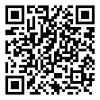首頁 > 產(chǎn)品中心 > 科研抗體 > 一抗
產(chǎn)品中心
相關(guān)產(chǎn)品
一抗
英文名稱 Anti-ASL/Argininosuccinate Lyase
中文名稱 琥珀酸裂解酶抗體
別 名 Argininosuccinase; Argininosuccinate lyase; Arginosuccinase; ARLY_HUMAN; ASAL; ASL; EC 4.3.2.1.
濃 度 1mg/1ml
規(guī) 格 0.2ml/200μg
抗體來源 Rabbit
克隆類型 polyclonal
交叉反應(yīng) Human, Mouse, Rat, Dog, Pig, Horse
產(chǎn)品類型 一抗
研究領(lǐng)域 腫瘤 細(xì)胞生物 信號轉(zhuǎn)導(dǎo) 新陳代謝
蛋白分子量 predicted molecular weight: 52kDa
性 狀 Lyophilized or Liquid
免 疫 原 KLH conjugated synthetic peptide derived from human ASL/Argininosuccinate Lyase
亞 型 IgG
純化方法 affinity purified by Protein A
儲 存 液 Preservative: 15mM Sodium Azide, Constituents: 1% BSA, 0.01M PBS, pH 7.4
產(chǎn)品應(yīng)用 WB=1:100-500 ELISA=1:500-1000 IHC-P=1:100-500 IHC-F=1:100-500 ICC=1:100-500 IF=1:100-500
(石蠟切片需做抗原修復(fù))
not yet tested in other applications.
optimal dilutions/concentrations should be determined by the end user.
保存條件 Store at -20 °C for one year. Avoid repeated freeze/thaw cycles. The lyophilized antibody is stable at room temperature for at least one month and for greater than a year when kept at -20°C. When reconstituted in sterile pH 7.4 0.01M PBS or diluent of antibody the antibody is stable for at least two weeks at 2-4 °C.
Important Note This product as supplied is intended for research use only, not for use in human, therapeutic or diagnostic applications.
產(chǎn)品介紹 ASL is a member of the lyase 1 family of proteins and is predominantly expressed in the liver. Localizing to the cytoplasm and existing as a homotetramer, ASL catalyzes the hydrolytic cleavage of argininosuccinic acid (ASA) to fumarate and arginine, an essential step of the urea cycle which is crucial for the detoxification of ammonia. This reaction is also involved in the biosynthesis of arginine. In addition, ASL shares high sequence homology with the avian and reptilian eye lens protein, d-crystallin. Mutations in the gene encoding ASL leads to an accumulation of ASA in body fluids and results in Arginosuc-cinic aciduria (ASAuria), an autosomal recessive disorder that is characterized by hyperammonemia, liver enlargement, convulsions, physical and mental retardation, episodic unconsciousness and dry and brittle hair showing trich-orrhexis nodosa (weak points or nodes in the hair shaft).
Function : Amino-acid biosynthesis; L-arginine biosynthesis; L-arginine from L-ornithine and carbamoyl phosphate: step 3/3.
Nitrogen metabolism; urea cycle; L-arginine and fumarate from (N(omega)-L-arginino)succinate: step 1/1.
Subcellular Location : Acetylation modifies enzyme activity in response to alterations of extracellular nutrient availability. Acetylation increased with trichostin A (TSA) or with nicotinamide (NAM). Glucose increases acetylation by about a factor of 3 with decreasing enzyme activity. Acetylation on Lys-288 is decreased on the addition of extra amino acids resulting in activation of enzyme activity.
DISEASE : Defects in ASL are the cause of arginosuccinicaciduria (ARGINSA) [MIM:207900]. Arginosuccinicaciduria is an autosomal recessive disorder of the urea cycle. The disease is characterized by mental and physical retardation, liver enlargement, skin lesions, dry and brittle hair showing trichorrhexis nodosa microscopically and fluorescing red, convulsions, and episodic unconsciousness.
Similarity : Belongs to the lyase 1 family. Argininosuccinate lyase subfamily.
Database links : UniProtKB/Swiss-Prot: P04424.4
中文名稱 琥珀酸裂解酶抗體
別 名 Argininosuccinase; Argininosuccinate lyase; Arginosuccinase; ARLY_HUMAN; ASAL; ASL; EC 4.3.2.1.
詳細(xì)介紹:
濃 度 1mg/1ml
規(guī) 格 0.2ml/200μg
抗體來源 Rabbit
克隆類型 polyclonal
交叉反應(yīng) Human, Mouse, Rat, Dog, Pig, Horse
產(chǎn)品類型 一抗
研究領(lǐng)域 腫瘤 細(xì)胞生物 信號轉(zhuǎn)導(dǎo) 新陳代謝
蛋白分子量 predicted molecular weight: 52kDa
性 狀 Lyophilized or Liquid
免 疫 原 KLH conjugated synthetic peptide derived from human ASL/Argininosuccinate Lyase
亞 型 IgG
純化方法 affinity purified by Protein A
儲 存 液 Preservative: 15mM Sodium Azide, Constituents: 1% BSA, 0.01M PBS, pH 7.4
產(chǎn)品應(yīng)用 WB=1:100-500 ELISA=1:500-1000 IHC-P=1:100-500 IHC-F=1:100-500 ICC=1:100-500 IF=1:100-500
(石蠟切片需做抗原修復(fù))
not yet tested in other applications.
optimal dilutions/concentrations should be determined by the end user.
保存條件 Store at -20 °C for one year. Avoid repeated freeze/thaw cycles. The lyophilized antibody is stable at room temperature for at least one month and for greater than a year when kept at -20°C. When reconstituted in sterile pH 7.4 0.01M PBS or diluent of antibody the antibody is stable for at least two weeks at 2-4 °C.
Important Note This product as supplied is intended for research use only, not for use in human, therapeutic or diagnostic applications.
相關(guān)資料:
產(chǎn)品介紹 ASL is a member of the lyase 1 family of proteins and is predominantly expressed in the liver. Localizing to the cytoplasm and existing as a homotetramer, ASL catalyzes the hydrolytic cleavage of argininosuccinic acid (ASA) to fumarate and arginine, an essential step of the urea cycle which is crucial for the detoxification of ammonia. This reaction is also involved in the biosynthesis of arginine. In addition, ASL shares high sequence homology with the avian and reptilian eye lens protein, d-crystallin. Mutations in the gene encoding ASL leads to an accumulation of ASA in body fluids and results in Arginosuc-cinic aciduria (ASAuria), an autosomal recessive disorder that is characterized by hyperammonemia, liver enlargement, convulsions, physical and mental retardation, episodic unconsciousness and dry and brittle hair showing trich-orrhexis nodosa (weak points or nodes in the hair shaft).
Function : Amino-acid biosynthesis; L-arginine biosynthesis; L-arginine from L-ornithine and carbamoyl phosphate: step 3/3.
Nitrogen metabolism; urea cycle; L-arginine and fumarate from (N(omega)-L-arginino)succinate: step 1/1.
Subcellular Location : Acetylation modifies enzyme activity in response to alterations of extracellular nutrient availability. Acetylation increased with trichostin A (TSA) or with nicotinamide (NAM). Glucose increases acetylation by about a factor of 3 with decreasing enzyme activity. Acetylation on Lys-288 is decreased on the addition of extra amino acids resulting in activation of enzyme activity.
DISEASE : Defects in ASL are the cause of arginosuccinicaciduria (ARGINSA) [MIM:207900]. Arginosuccinicaciduria is an autosomal recessive disorder of the urea cycle. The disease is characterized by mental and physical retardation, liver enlargement, skin lesions, dry and brittle hair showing trichorrhexis nodosa microscopically and fluorescing red, convulsions, and episodic unconsciousness.
Similarity : Belongs to the lyase 1 family. Argininosuccinate lyase subfamily.
Database links : UniProtKB/Swiss-Prot: P04424.4
- 上一條:精氨酰tRNA合成酶抗體
- 下一條:ADP核糖基化因子相關(guān)蛋白1

